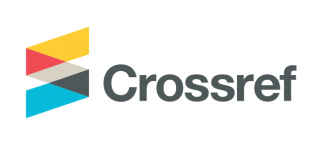THE QUALITY OF SEAHORSE JUVENILES Hippocampus barbouri AFTER MODIFYING NATURAL FEED Artemia NAUPLII TO Phronima sp.
DOI:
https://doi.org/10.20956/jiks.v5i2.8936Keywords:
Artemia naupli, Hippocampus barbouri, Juvenile, Phronima sp., Sea horseAbstract
This study aims to determine the substitution rate of Artemia naupli to Phronima sp., which produces high-quality seahorses H. Barbouri juveniles This research was carried out using CRD (Completed Randomized Design) with five treatments and three replications. The treatments were natural feeding with different levels of substitution, (A) 100% Artemia nauplii, (B) 75% Artemia nauplii+25% Phronima sp. (C) 50% Artemia nauplii +50% Phronima, (D) 25% Artemia nauplii+75% Phronima sp. and (E) 100% Phronima sp. Data were analyzed with Analysis of Variance and W-Tuckey test to determine the significant difference between the treatments. The parameters of the study included the analysis of feed quality (proximate and amino acid analysis) and survival. Results of the ANOVA indicated that the substitution of Artemia nauplii to Phronima sp. had a significant effect (P <0.05) on survival rate. Based on the result of the proximate analysis of Phronima, the protein and fat content is insufficient for juvenile requirements, which only ranged from 37,12% and 3,82%. The results of the amino acid analysis of Phronima, the total of essential amino acids are deficient in juvenile requirements. The treatments of C and D produces the highest survival value of 96,67%. While in E treatment produce the lowest survival value of 63,33%. Based on the juvenile quality analysis, it can be concluded that the use of Phronima as an alternative feed for seahorse juveniles H. barbouri can be given at a substitution rate of up to 75%.
References
Abidin, Z., Fahirus, W., & Gebbie, E. (2008). Studi Tingkah Laku Pemijahan, Kelahiran & Pertumbuhan Kuda Laut H. kuda pada Pemeliharaan Sistem Indoor. BBPBL Lampung. 1-12 hal.
Afrianto, E & Liviawati, E. (2005). Pakan Ikan Kanisius. Yogyakarta. 141 hal.
Blanco, A., Quintas, P., & Planas, M. (2011). Enhancement in The Rearing of The Seahorse Hippocampus Guttulatus by Feeding on Copepods. International Zoo and Aquarium Symposium-The Husbandry. Management and Conservation of Syngnathids. Chicago. Illinois (USA).
Buwono, I. B. (2000). Kebutuhan Asam Amino Esensial dalam Ransum Ikan. Kanisius. Yogyakarta
Fattah, M.H. & Senong, M. (2008). Uji Pendahuluan Kultur Phronima sp. (Phronima sp. sp.) Laboratorium Lapang Akuakultur. Fakultas Perikanan & Ilmu Kelautan, Universitas Muslim Indonesia (UMI), Makassar.
Fattah, M.H., Senong, M., Asbar & Rahbiah, B.S. (2014). Production of Endemic Microcrustacean Phronima sp. (Phronima sp. sp) to Subtitute Artemia salina in Tiger Prawn Cultivation. Aquaculter Research and Development. Vol 5.
Handajani, H & Widodo, W. (2010). Nutrisi Ikan. UMM Press. Malang. 271 hal.
Koldewey, H.J. & Martin-Smith, K.M., 2010. A Global Review of Seahorse Aquaculture. Aquaculture Journal 302, 131-152. Li, P.,
Kangsen, M., Jesse, T., & Guoyao, W. (2008). New Developments in Fish Amino Acid Nutrition: Towards Functional and Environmentally Oriented Aquafeeds. Amino Acids. doi : 10.1007/s00726-008-0171-1.
Li, P., Kangsen, M., Jesse, T., & Guoyao, W. 2008. New Developments in Fish Amino Acid Nutrition: Towards Functional and Environmentally Oriented Aquafeeds. Amino Acids. doi : 10.1007/s00726-008-0171-1.
Lin, Q., Zhang, D., & Lin, J. (2009). Effects of Light intensity, Stocking Density, Feeding Frequency, and Salinity on The Growth of Sub-Adult Seahorses Hippocampus erectus Perry, 1810. Aquaculture 292, 111–116.
Mulyadi, B. 2004. Pengaruh Padat Penebaran terhadap Sintasan & Pertumbuhan Juwana Kuda Laut (Hippocampus barbouri). Skripsi. Fakultas Ilmu Kelautan Perikanan. Universitas Hasanuddin. Makassar.
Nenciu, M.I et al. (2015). Effects of Different Live Feed Diets Applied to the Long-Snouted Seahorse (Hippocampus guttulatus Cuvier, 1829). Turkish Journal of Fisheries and Aquatic Sciences 15: 401-410.
Novelli, B et al. (2016). Digestive Biochemistry as an Indicator of The Nutritional Status During Early Development of The Long Snouted Seahorse (Hippocampus reidi). Aquaculture Journal 10.1016/j.aquaculture.2016.06.037.
Payne, M.F., & Rippingale, R.J. (2000). Rearing West Australian seahorse, Hippocampus subelongatus, Juveniles on Copepod Nauplii and Enriched Artemia. Aquaculture 188, 353–361.
Pramono, T.B., Dyahruri, S & Soedibya, P.H.T. (2007). Optimasi Pakan dengan Level Protein dan Energi Protein untuk Pertumbuhan Calon Induk Ikan Senggaringan (Mystus Nigriceps). Jurnal Optimasi Pakan dengan Level Protein dan Energi Protein, Vol. 15. No.2.
Ronnestad et al. (2003). The Supply of Amino Acids During Early Feeding Stages of Marine Fish Larvae: A Review of Recent Findings. Aquaculture 227 (2003) 147-164.
Rosa, I.L., Oliveira, T.P., Osório, F.M., Moraes, L.E., Castro, A.L., Barros, G.M & Alves, R.R. 2011. Fisheries and Trade of Seahorses In Brazil: Historical Perspective, Current Trends, and Future Directions. Biod. Cons. 20, 1951-1971.
Santoso, B. (2014). Analisis Jenis Makanan Kuda Laut Hippocampus barbouri, (Jor& & Richardson, 1908) Pada Daerah Padang Lamun di Kepulauan Tanakeke, Takalar, Sulawesi Selatan. Skripsi. Fakultas Ilmu Kelautan & Perikanan. Universitas Hasanuddin.
Satyani, D. (2003). Pengaruh Umur Ikan Induk ikan Cupang (Betta splenden Regan) & Jenis Pakan Terhadap Fekunditas & Produksi Larvanya. Jurnal Penelitian Perikanan Indonesia. 9(4): 13-18.
Sitompul, S. (2004). Analisis Asam Amino dalam Tepung Ikan & Bungkil Kedelai. Buletin Teknik Pertanian 9(1):33-37.
Syafiuddin. (2004). Pembenihan & Penangkaran sebagai Alternatif Pelestarian Populasi Kuda Laut (Hippocampus spp.) di Alam. Makalah Falsafah Sains. IPB, Bogor.
Wijaya, R. (2003). Pengaruh Penambahan Multi Asam Amino Esensial Dalam Media Kultur Terhadap Tingkat Kelangsungan Hidup & Pertumbuhan Larva Ikan Nilem (Osteochilus hasselti C.V). Tesis. Program Pasca Sarjana, Institut Pertanian Bogor, Bogor.
Winarno, F.G. 2008. Kimia Pangan & Gizi. Bogor. M-Brioo Press.
Woods, C.M.C. (2007). Aquaculture of The Big_bellied Seahorses Hippocampus Abdominalis Lesson 1827 (Teleostei: Syngnathidae). Thesis. Philosophy in Biological Sciences. Victoria University of Wellington.
Downloads
Published
Issue
Section
License

This work is licensed under a Creative Commons Attribution 4.0 International License













